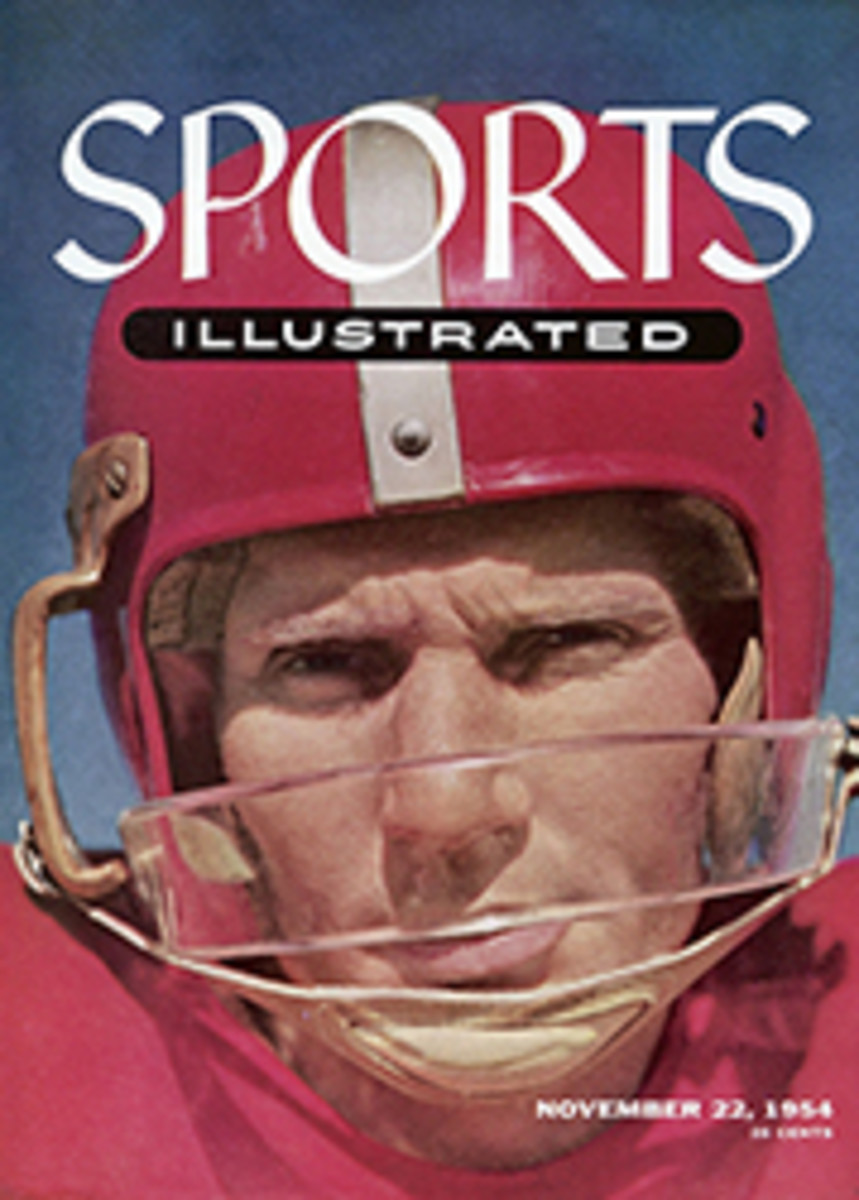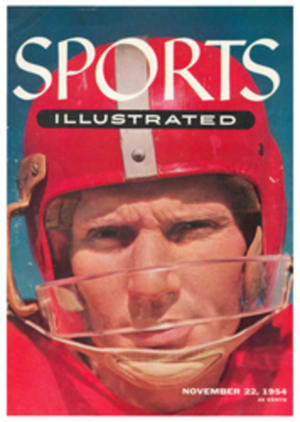
THE RED STAMP ON SPORTS
In the 37 years of the Soviet Union's existence an unprecedented flood of more than 1,500 different postage stamps has poured from Russia's presses. Each stamp carries its own propaganda message to the masses and/or the outside world. A number of these stamps have sports motifs and are aimed at Ivan and Anna to hammer home the cynical and calculated sop of athletics and mass calisthenics as a suitable substitute for better living conditions, more food and warmer clothes. Other sports stamps inform the world that the Soviet man and woman are able to outstrip their bourgeois counterparts in work or at play.
Since the end of World War II a steady stream of sports stamps has come from other Communist countries: Albania, Bulgaria, Czechoslovakia, Hungary, Democratic Germany (Russian Zone), Communist China, Tito's Yugoslavia and her Zone B in Trieste, Romania and Poland. Early issues modestly hoped to show with each new Five Year Plan and its accompanying speed-up that Russians still had time for soccer, tennis [sic!], swimming, rowing and other sports. Subsequently, the military might of the Communist world has added a bass note to the crescendo. The 1946 Balkan Games set of Albania, and Bulgaria's sports set of 1949 both showed the readiness of these countries to make the transition from war to peace or from peace to war.
Finally came the present arrogant note, the paean sung in self-praise for each new victory, each world's record, each new stadium. More backward athletically, the Chinese have, been content with 40 stamps issued in blocks of four, each stamp showing a step in an exercise to be performed to the accompaniment of a radio broadcast, à la Walter Camp's Daily Dozen of some 25 years ago.
Ironically, these many stamps are aimed directly at American pocketbooks, for stamp collecting behind the curtain is dangerously capitalistic. And dealing in stamps has become a government monopoly in all cases. In fact, to collect such stamps is the most dangerous sport of all.
All stamps form author's collection
RUSSIA
A typical propaganda set issued late in 1938 in connection with no event whatever
One of philately's earliest attempts at stamp design in a modern art style, these oversized rotogravure-printed stamps marked the 1935 Spartacist Games held in Moscow
When this set appeared in 1949, Russia's sports prowess was still a matter of world surmise
RED CHINA
Unique blocks of four stamps issued one per week to teach health program to Chinese. Each stamp is a step in a particular exercise and is numbered. Ten blocks were issued
EAST GERMANY
Stamp commemorating 7th International Freedom Race (left) was issued this year. Below, a 1951 set issued for second winter sports championships at Oberhof
YUGOSLAVIA
Stamp at far left was issued in 1948 to mark Balkan Games in Belgrade; others are 1953 issue publicizing Adriatic Rally and International motorcycle races
POLAND
Photogravure stamps publicized Spartacist Games; issue at right was lithographed winter sports "quickie"
HUNGARY
When Hungarians beat British 6-3 in soccer game at Wembley, stamp at left was hastily overprinted with score; other issue pays tribute to impressive new People's Stadium
ROMANIA
When 1947 Balkan Games were held in Bucharest, stamp at left was issued. Those below, quite Russian in appearance, incorporate insigne of a 1950 Romanian sports organization
CZECHOSLOVAKIA
Emil Zatopek stars in recent issue (left), while winter sports and gymnastics are among other Czech sets
BULGARIA
This 1949 set combines trackman and grenade-thrower (left) with relatively innocent cyclist and an ominous hurdler backed by an infantryman in full battle accouterment
TRIESTE-YUGOSLAV ZONE
The Yugoslav stamps shown at left and right have military occupation overprints for use in Zone B, were issued to publicize Yugoslav participation in Olympics. The 1952 stamp below was not pegged to any specific event
THIRTY EIGHT PHOTOS

